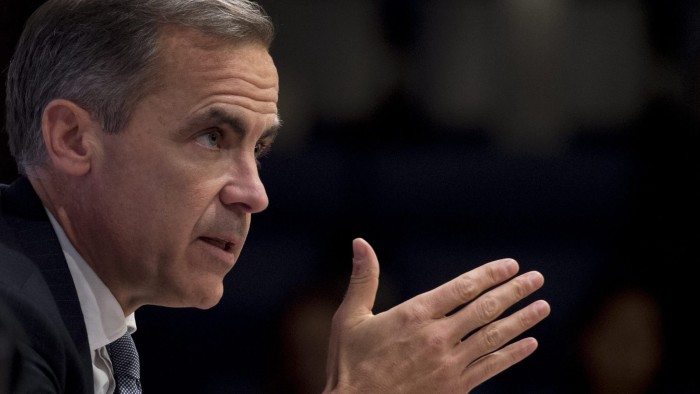Mark Carney hits back at Leave campaign warning

Roula Khalaf, Editor of the FT, selects her favourite stories in this weekly newsletter.
Bank of England governor Mark Carney has responded forcefully to behind-the-scenes attempts to muzzle the central bank, saying that a leading Leave campaigner’s threats contained “numerous and substantial” misconceptions.
Following an exchange of letters obtained by the BBC and confirmed by the BoE, Bernard Jenkin MP, a Vote Leave board member and author, repeated on Thursday that the governor “needs to be very careful what he says”.
The row over Brexit is the first time since the central bank was granted independence in 1997 it has come under sustained criticism, and highlights the potential difficulty of repairing relations between a large part of the Conservative political establishment and many of Britain’s institutions after next week’s referendum.
The BoE’s interventions in the EU referendum debate have infuriated Leave campaigners for the past six months. The bank’s assessment showed that membership had been beneficial to the UK economy, and that leaving was the greatest domestic risk to stability and could threaten a recession.
The BoE has insisted it has no view on the outcome, but its duty to foster the public good by maintaining monetary and financial stability has forced it to evaluate the risks of leaving.
It has followed the rules of purdah — restrictions on government announcements in the lead up to a vote — for the past few weeks, although it says it was under no obligation to do so.
When the BoE received a letter on Monday from Mr Jenkin, officials were shocked. The letter said Mr Carney had made his views on the referendum well known and then issued the following warning to the governor.
“You are prohibited from making any public comment, or doing anything which could be construed as taking part in the referendum debate,” Mr Jenkin wrote to the governor.
“I have taken legal advice from Speakers’ Counsel . . . [and] wanted to take the opportunity to stress the importance of this matter. I very much hope you will avoid doing anything which could suggest you or the Bank have disregarded Parliament’s wishes.”
Sensing this was a direct threat to the bank’s operational independence to act in the public interest, Mr Carney issued a three-page response, which the BoE says it will publish.
It has confirmed that the letter says the governor has not made his views known in public, but adds: “All of the public comments that I, or other Bank officials, have made regarding issues related to the referendum have been limited to factors that affect the Bank’s statutory responsibilities and have been entirely consistent with our remits.”
Accusing Mr Jenkin of not understanding the constitution, Mr Carney’s response, which was discussed at the highest levels within the central bank, says the MP “demonstrates a fundamental misunderstanding of central bank independence”.
The governor will deliver a long planned speech at Mansion House on Thursday evening, where he will discuss financial technology.
The BoE’s minutes of the Monetary Policy Committee will, however, be published on Thursday “as normal” and the committee will comment on the risks to the economy.
Hitting back at Mr Jenkin’s threats, Mr Carney said: “In the future I would be grateful if you would do me and my fellow independent committee members the courtesy of consulting the public record before writing letters such as that which I received on Monday.”
Responding to the row, Alistair Darling, former chancellor and a Remain campaigner, said: “This is a blatant attempt to muzzle a respected independent voice. It is very clear the Leave campaign doesn’t want people to hear what the Bank has to say on the most critical issue facing our generation because they don’t like its conclusions.
Comments